Emotion Drives Material Innovation—A Method for Investigating Emotional Reactions to Wood Materials
Abstract
1. Introduction
2. Materials and Methods
2.1. Participants
2.2. Experimental Sample Selection and Classification
2.3. Subjective Emotion Evaluation Items
2.4. Physiological Emotion Measurement
2.5. Physiological Data Collection Equipment
2.6. Experimental Process
2.7. Data Extraction and Analysis
3. Results
3.1. Correlation Analysis Between Subjective Evaluation and Physiological Indicators
3.1.1. Internal Relationships Among the Subjective Evaluations
3.1.2. Internal Relationship of Physiological Indicators
3.1.3. The Relationship Between Subjectivity and Physiology
3.2. Analysis of Differences in Emotional Responses to Material Sources
3.3. Analysis of Differences in Materials’ Tactile Sensations
3.4. Analysis of Differences in Emotional Responses to Material Texture
3.5. Analysis of Differences in Emotional Responses to Material Brightness
4. Discussion
4.1. Correlation Analysis Between Subjective Evaluation and Physiological Indicators
4.1.1. Internal Relationships Among the Subjective Evaluations
4.1.2. Internal Relationship of Physiological Indicators
4.1.3. The Relationship Between Subjectivity and Physiology
4.2. Analysis of Differences in Emotional Responses to Material Sources
4.3. The Differences in Materials’ Tactile Sensations
4.4. The Differences in Emotional Responses to Material Texture
4.5. The Differences in Emotional Responses to Material Brightness
5. Conclusions
Author Contributions
Funding
Institutional Review Board Statement
Informed Consent Statement
Data Availability Statement
Conflicts of Interest
Appendix A
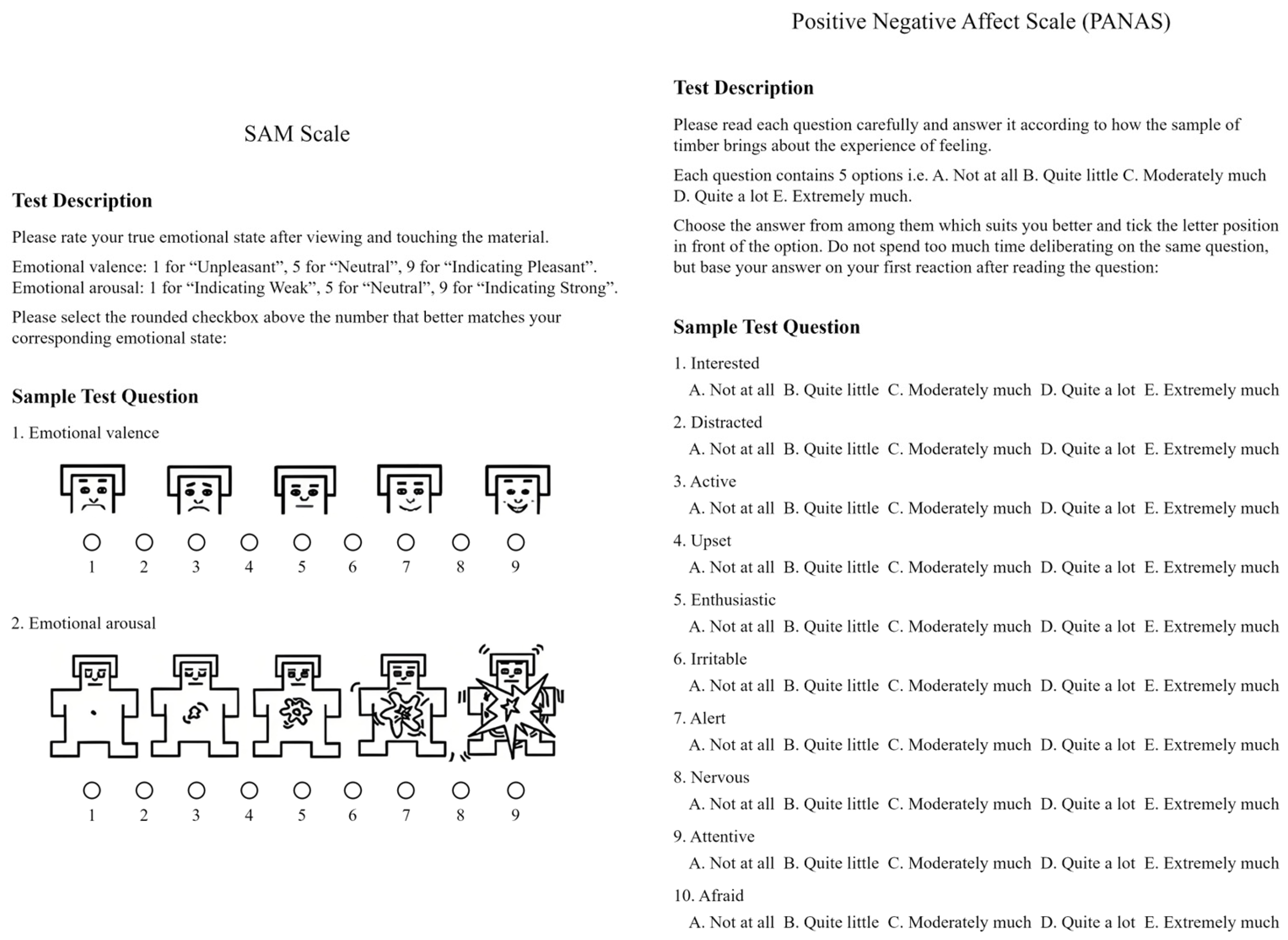
References
- Mao, Y.; Hu, L.; Ren, Z.J. Engineered Wood for a Sustainable Future. Matter 2022, 5, 1326–1329. [Google Scholar] [CrossRef]
- He, R.; Xu, J. Research on the Application of Visual Semantics of Wood in the Design of Cultural and Creative Products. Furnit. Inter. Decor. 2021, 5, 108–110. [Google Scholar] [CrossRef]
- Gao, P.; Zhang, Y.; Long, Z. Kansei Drives Sustainable Material Innovation—An Approach to Enhance the Added Value of Biomass Materials. Sustainability 2024, 16, 5546. [Google Scholar] [CrossRef]
- Gao, P.; Yang, L.I.; Ming, H.U.; Dai, X.D. Bio-Based material design: Development of a model for enhancing the perceptual value of materials. J. Environ. Prot. Ecol. 2023, 24, 145–155. [Google Scholar]
- Sauerwein, M.; Karana, E.; Rognoli, V. Revived Beauty: Research into Aesthetic Appreciation of Materials to Valorise Materials from Waste. Sustainability 2017, 9, 529. [Google Scholar] [CrossRef]
- [Log Topic] Wood Water Source: Pre-Launch Warm-up for Log Futures—Supply and Demand Structure. Available online: https://finance.sina.com.cn/money/future/fmnews/2024-10-31/doc-incumwnf9691939.shtml (accessed on 28 February 2025).
- Houck, J.E.; Eagle, B.N. Hardwood or Softwood? Sci. Technol. 1998, 32, 13–22. [Google Scholar]
- Jones, D.; Brischke, C. Performance of Bio-Based Building Materials; Woodhead Publishing: Cambridge, UK, 2017. [Google Scholar]
- Chen, B.; Mohrmann, S.; Li, H.; Gaff, M.; Lorenzo, R.; Corbi, I.; Corbi, O.; Fang, K.; Li, M. Research and Application Progress of Straw. J. Renew. Mater. 2022, 11, 599–623. [Google Scholar] [CrossRef]
- Deng, N.; Wang, J.; Li, J.; Sun, J. Straw Density Board vs. Conventional Density Board: Is Straw Density Board More Sustainable? Sci. Total Environ. 2023, 888, 164020. [Google Scholar] [CrossRef]
- Li, Y.; Zhu, N.; Chen, J. Straw Characteristics and Mechanical Straw Building Materials: A Review. J. Mater. Sci. 2023, 58, 2361–2380. [Google Scholar] [CrossRef]
- Febrianto, F.; Hidayat, W.; Samosir, T.P.; Lin, H.; Soong, H. Effect of Strand Combination on Dimensional Stability and Mechanical Properties of Oriented Strand Board Made from Tropical Fast Growing Tree Species. J. Biol. Sci. 2010, 10, 267–272. [Google Scholar] [CrossRef]
- Nishimura, T. Chipboard, Oriented Strand Board (OSB) and Structural Composite Lumber. In Wood Composites; Elsevier: Amsterdam, The Netherlands, 2015; pp. 103–121. [Google Scholar]
- Mu, T. Research on the Visual-Tactile Properties of Wood Doors with Oriented Strand Boards. Ph.D. Thesis, Nanjing Forestry University, Nanjing, China, 2023. [Google Scholar]
- Wang, R.; Lv, B. China’s Wooden Home Surface Decoration Industry Development Status and Thinking. Chin. Wood Based Panel 2019, 26, 10–14. Available online: https://wenku.baidu.com/view/46e3e269a75177232f60ddccda38376baf1fe098?fr=xueshu&_wkts_=1741276738785&needWelcomeRecommand=1 (accessed on 3 February 2025).
- Kandelbauer, A.; Teischinger, A. Dynamic Mechanical Properties of Decorative Papers Impregnated with Melamine Formaldehyde Resin. Eur. J. Wood Wood Prod. 2009, 68, 179–187. [Google Scholar] [CrossRef]
- Amor, A.B.; Cloutier, A.; Beauregard, R. Determination of Physical and Mechanical Properties of Finishing Papers Used for Wood-Based Composite Products. Wood Fiber Sci. 2009, 23, 117–126. [Google Scholar] [CrossRef]
- Shen, C. Research on High Abrasion-Resistant Impregnated Paper and Its Production Process. For. Sci. Technol. Dev. 2001, 15, 33–34. [Google Scholar] [CrossRef]
- Gu, Z.; Jiang, B.; Zhu, P.; Sun, X.; Lian, H. Preparation of Mg/Al-LDHs Nanoflame Retardants and Their Application in Veneered Artificial Boards. J. For. Eng. 2016, 1, 39–44. [Google Scholar] [CrossRef]
- Bertheaux, C.; Zimmermann, E.; Gazel, M.; Delanoy, J.; Raimbaud, P.; Lavoué, G. Effect of Material Properties on Emotion: A Virtual Reality Study. Front. Hum. Neurosci. 2024, 17, 1301891. [Google Scholar] [CrossRef]
- D’Itria, E.; Colombi, C. Biobased Innovation as a Fashion and Textile Design Must: A European Perspective. Sustainability 2022, 14, 570. [Google Scholar] [CrossRef]
- Takashi, S.; Akiko, K.; Fumio, T.; Mitsunori, K. Texture Expression by Composite of Silicone Resin and Filler. Des. Stud. 2015, 61, 6_85–6_92. [Google Scholar] [CrossRef]
- Shen, D.; Takuro, I.; Koichiro, S.; Fumio, T.; Mitsunori, K. Investigation of Dyeing Method Focusing on the Structure of Bamboo and Evaluation of the Impression of Dyed Bamboo Wood. Des. Stud. 2017, 63, 6_65–6_72. [Google Scholar] [CrossRef]
- Satoshi, N.; Kei, M.; Shintaro, N. Evaluation of Visual Desirability of 50 Japanese Wood Species Using Digital Images. J. Soc. Wood Sci. Technol. 2016, 62, 301–310. [Google Scholar] [CrossRef][Green Version]
- Gao, P.; Ogata, M. Research on the Visual Impression and Preference of Biomass Material “Tea Wood”. Design 2020, 33, 60–63. Available online: https://qikan.cqvip.com/Qikan/Article/Detail?id=7101261529 (accessed on 3 February 2025).
- Lv, J.; Chen, D. Emotional Apparel Evaluation Based on Consumer Psychological Perception. J. Text. 2015, 36, 100–107. [Google Scholar] [CrossRef]
- Wei, H.; Chen, W.; Wei, J.; Zhang, J. Reliability Test of the Children’s Version of the Positive-Negative Affect Scale in a Group of Middle School Students. Chin. J. Clin. Psychol. 2017, 25, 105–110. [Google Scholar] [CrossRef]
- Ebesutani, C.; Regan, J.; Smith, A.; Reise, S.; Higa-McMillan, C.; Chorpita, B.F. The 10-Item Positive and Negative Affect Schedule for Children, Child and Parent Shortened Versions: Application of Item Response Theory for More Efficient Assessment. J. Psychopathol. Behav. Assess. 2012, 34, 191–203. [Google Scholar] [CrossRef]
- Watson, D.; Clark, L.A.; Tellegen, A. Development and Validation of Brief Measures of Positive and Negative Affect: The PANAS Scales. J. Personal. Soc. Psychol. 1988, 54, 1063. [Google Scholar] [CrossRef]
- Babiker, A.; Faye, I.; Malik, A. Pupillary Behavior in Positive and Negative Emotions. In Proceedings of the 2013 IEEE international conference on signal and image processing applications, Melaka, Malaysia, 8–10 October 2013; IEEE: Piscataway, NJ, USA, 2013; pp. 379–383. [Google Scholar]
- Francis, S.; Rolls, E.T.; Bowtell, R.; McGlone, F.; O’Doherty, J.; Browning, A.; Clare, S.; Smith, E. The Representation of Pleasant Touch in the Brain and Its Relationship with Taste and Olfactory Areas. Neuroreport 1999, 10, 453–459. [Google Scholar] [CrossRef]
- Quan, X.; Zeng, Z.; Jiang, J.; Zhang, Y.; Lv, B.; Wu, D. A Review of Research on Physiological Signal-Based Affective Computing. J. Autom. 2021, 47, 1769–1784. [Google Scholar] [CrossRef]
- Hu, X.; Yu, J.; Song, M.; Yu, C.; Wang, F.; Sun, P.; Wang, D.; Zhang, D. EEG Correlates of Ten Positive Emotions. Front. Hum. Neurosci. 2017, 11, 26. [Google Scholar] [CrossRef]
- Yasemin, M.; Sarıkaya, M.A.; Ince, G. Emotional State Estimation Using Sensor Fusion of EEG and EDA. In Proceedings of the 2019 41st Annual International Conference of the IEEE Engineering in Medicine and Biology Society (EMBC), Berlin, Germany, 23–27 July 2019; IEEE: Piscataway, NJ, USA, 2019; pp. 5609–5612. [Google Scholar]
- Gupta, K.; Zhang, Y.; Gunasekaran, T.S.; Krishna, N.; Pai, Y.S.; Billinghurst, M. CAEVR: Biosignals-Driven Context-Aware Empathy in Virtual Reality. IEEE Trans. Vis. Comput. Graph. 2024, 30, 2671–2681. [Google Scholar] [CrossRef]
- Sargent, A.; Watson, J.; Ye, H.; Suri, R.; Ayaz, H. Neuroergonomic Assessment of Hot Beverage Preparation and Consumption: An EEG and EDA Study. Front. Hum. Neurosci. 2020, 14, 175. [Google Scholar] [CrossRef]
- Hwang, S.; Jebelli, H.; Choi, B.; Choi, M.; Lee, S. Measuring Workers’ Emotional State during Construction Tasks Using Wearable EEG. J. Constr. Eng. Manag. 2018, 144, 04018050. [Google Scholar] [CrossRef]
- Zhai, J.; Barreto, A.B.; Chin, C.; Li, C. Realization of Stress Detection Using Psychophysiological Signals for Improvement of Human-Computer Interactions. In Proceedings of the Proceedings. IEEE SoutheastCon, Ft. Lauderdale, FL, USA, 8–10 April 2005; IEEE: Piscataway, NJ, USA, 2005; pp. 415–420. [Google Scholar]
- Chanel, G.; Rebetez, C.; Bétrancourt, M.; Pun, T. Emotion Assessment from Physiological Signals for Adaptation of Game Difficulty. IEEE Trans. Syst. Man. Cybern. Part A Syst. Hum. 2011, 41, 1052–1063. [Google Scholar] [CrossRef]
- Caruelle, D.; Gustafsson, A.; Shams, P.; Lervik-Olsen, L. The Use of Electrodermal Activity (EDA) Measurement to Understand Consumer Emotions–A Literature Review and a Call for Action. J. Bus. Res. 2019, 104, 146–160. [Google Scholar] [CrossRef]
- Marschallek, B.E.; Löw, A.; Jacobsen, T. You Can Touch This! Brain Correlates of Aesthetic Processing of Active Fingertip Exploration of Material Surfaces. Neuropsychologia 2023, 182, 108520. [Google Scholar] [CrossRef] [PubMed]
- Suhaimi, N.S.; Mountstephens, J.; Teo, J. EEG-Based Emotion Recognition: A State-of-the-Art Review of Current Trends and Opportunities. Comput. Intell. Neurosci. 2020, 2020, 8875426. [Google Scholar] [CrossRef]
- Xie, X.; Cai, J.; Fang, H.; Wang, B.; He, H.; Zhou, Y.; Xiao, Y.; Yamanaka, T.; Li, X. Affective Impressions Recognition under Different Colored Lights Based on Physiological Signals and Subjective Evaluation Method. Sensors 2023, 23, 5322. [Google Scholar] [CrossRef]
- Wang, J.; Lu, J.; Xu, Z.; Wang, X. When Lights Can Breathe: Investigating the Influences of Breathing Lights on Users’ Emotion. Int. J. Environ. Res. Public Health 2022, 19, 13205. [Google Scholar] [CrossRef]
- Ikei, H.; Song, C.; Miyazaki, Y. Physiological Effects of Touching Wood. Int. J. Environ. Res. Public Health 2017, 14, 801. [Google Scholar] [CrossRef]
- Palmiero, M.; Piccardi, L. Frontal EEG Asymmetry of Mood: A Mini-Review. Front. Behav. Neurosci. 2017, 11, 224. [Google Scholar] [CrossRef]
- Al-Nafjan, A.; Hosny, M.; Al-Wabil, A.; Al-Ohali, Y. Classification of Human Emotions from Electroencephalogram (EEG) Signal Using Deep Neural Network. Int. J. Adv. Comput. Sci. Appl. 2017, 8, 419–425. [Google Scholar] [CrossRef]
- Wang, F.; Ma, X.; Cheng, D.; Gao, L.; Yao, C.; Lin, W. Electroencephalography as an Objective Method for Assessing Subjective Emotions during the Application of Cream. Ski. Res. Technol. 2024, 30, e13692. [Google Scholar] [CrossRef] [PubMed]
- Ge, Y.; Chen, Y.; Liu, Y.; Li, W.; Sun, X. Electrophysiological Measures Applied in User Experience Studies. Adv. Psychol. Sci. 2014, 22, 959. [Google Scholar] [CrossRef]
- Sánchez-Reolid, R.; López de la Rosa, F.; Sánchez-Reolid, D.; López, M.T.; Fernández-Caballero, A. Machine Learning Techniques for Arousal Classification from Electrodermal Activity: A Systematic Review. Sensors 2022, 22, 8886. [Google Scholar] [CrossRef]
- Harley, J.M.; Jarrell, A.; Lajoie, S.P. Emotion Regulation Tendencies, Achievement Emotions, and Physiological Arousal in a Medical Diagnostic Reasoning Simulation. Instr. Sci. 2019, 47, 151–180. [Google Scholar] [CrossRef]
- Dawson, M.E.; Schell, A.M.; Filion, D.L. The Electrodermal System. In Handbook of Psychophysiology; Cambridge University Press: Cambridge, UK, 2007; Volume 2, pp. 159–181. [Google Scholar]
- Ho, S.M.; Mak, C.W.; Yeung, D.; Duan, W.; Tang, S.; Yeung, J.C.; Ching, R. Emotional Valence, Arousal, and Threat Ratings of 160 Chinese Words among Adolescents. PLoS ONE 2015, 10, e0132294. [Google Scholar] [CrossRef]
- Xu, X.; Li, J.; Chen, H. Valence and Arousal Ratings for 11,310 Simplified Chinese Words. Behav. Res. 2022, 54, 26–41. [Google Scholar] [CrossRef]
- Chan, Y.-L.; Tse, C.-S. Decoding the Essence of Two-Character Chinese Words: Unveiling Valence, Arousal, Concreteness, Familiarity, and Imageability through Word Norming. Behav. Res. 2024, 56, 7574–7601. [Google Scholar] [CrossRef]
- Yee, L.T. Valence, Arousal, Familiarity, Concreteness, and Imageability Ratings for 292 Two-Character Chinese Nouns in Cantonese Speakers in Hong Kong. PLoS ONE 2017, 12, e0174569. [Google Scholar] [CrossRef]
- Hutchison, K.E.; Trombley, R.P.; Collins, F.L., Jr.; McNeil, D.W.; Turk, C.L.; Carter, L.E.; Ries, B.J.; Leftwich, M.J. A Comparison of Two Models of Emotion: Can Measurement of Emotion Based on One Model Be Used to Make Inferences about the Other? Personal. Individ. Differ. 1996, 21, 785–789. [Google Scholar] [CrossRef]
- Hou, X.; Liu, Y.; Sourina, O.; Mueller-Wittig, W. CogniMeter: EEG-Based Emotion, Mental Workload and Stress Visual Monitoring. In Proceedings of the 2015 International Conference on Cyberworlds (CW), Visby, Sweden, 7–9 October 2015; IEEE: Piscataway, NJ, USA, 2015; pp. 153–160. [Google Scholar]
- Hot, P.; Leconte, P.; Sequeira, H. Diurnal Autonomic Variations and Emotional Reactivity. Biol. Psychol. 2005, 69, 261–270. [Google Scholar] [CrossRef]
- Russell, J.A.; Weiss, A.; Mendelsohn, G.A. Affect Grid: A Single-Item Scale of Pleasure and Arousal. J. Personal. Soc. Psychol. 1989, 57, 493. [Google Scholar] [CrossRef]
- Burkhardt, F. Simulation of Emotional Speech with Speech Synthesis Methods; Shaker: Maastricht, The Netherlands, 2001. [Google Scholar]
- Nilawati, S.; Amri, S.; Hasanah, N.; Saodah, S.; Juliati, J.; Sapnita, S. Unraveling Emotional Regulation through Multimodal Neuroimaging Techniques. BrainBridge Neurosci. Biomed. Eng. 2024, 1, 1–26. [Google Scholar] [CrossRef]
- Abella, A.; Araya León, M.; Marco-Almagro, L.; Clèries Garcia, L. Perception Evaluation Kit: A Case Study with Materials and Learning Styles. Int. J. Technol. Des. Educ. 2022, 32, 1941–1962. [Google Scholar] [CrossRef] [PubMed]
- Cavdan, M.; Freund, A.; Trieschmann, A.-K.; Doerschner, K.; Drewing, K. From Hate to Love: How Learning Can Change Affective Responses to Touched Materials. In Haptics: Science, Technology, Applications, Proceedings of the 13th International Conference on Human Haptic Sensing and Touch Enabled Computer Applications, EuroHaptics 2022, Hamburg, Germany, 22–25 May 2022; Nisky, I., Hartcher-O’Brien, J., Wiertlewski, M., Smeets, J., Eds.; Springer International Publishing: Cham, Switzerland, 2020; pp. 60–68. [Google Scholar]
- Demattè, M.L.; Zucco, G.M.; Roncato, S.; Gatto, P.; Paulon, E.; Cavalli, R.; Zanetti, M. New Insights into the Psychological Dimension of Wood–Human Interaction. Eur. J. Wood Prod. 2018, 76, 1093–1100. [Google Scholar] [CrossRef]
- Bhatta, S.R.; Tiippana, K.; Vahtikari, K.; Hughes, M.; Kyttä, M. Sensory and Emotional Perception of Wooden Surfaces through Fingertip Touch. Front. Psychol. 2017, 8, 367. [Google Scholar] [CrossRef]
- Douglas, I.P.; Murnane, E.L.; Bencharit, L.Z.; Altaf, B.; dos Reis Costa, J.M.; Yang, J.; Ackerson, M.; Srivastava, C.; Cooper, M.; Douglas, K. Physical Workplaces and Human Well-Being: A Mixed-Methods Study to Quantify the Effects of Materials, Windows, and Representation on Biobehavioral Outcomes. Build. Environ. 2022, 224, 109516. [Google Scholar] [CrossRef]
- Silva, C.; Ferreira, A.C.; Soares, I.; Esteves, F. Emotions Under the Skin: Autonomic Reactivity to Emotional Pictures in Insecure Attachment. J. Psychophysiol. 2015, 29, 161–170. [Google Scholar] [CrossRef]
- Jindrová, M.; Kocourek, M.; Telenskỳ, P. Skin Conductance Rise Time and Amplitude Discern between Different Degrees of Emotional Arousal Induced by Affective Pictures Presented on a Computer Screen. BioRxiv 2020. [Google Scholar] [CrossRef]
- Gomez, P.; Zimmermann, P.; Guttormsen-Schär, S.; Danuser, B. Respiratory Responses Associated with Affective Processing of Film Stimuli. Biol. Psychol. 2005, 68, 223–235. [Google Scholar] [CrossRef]

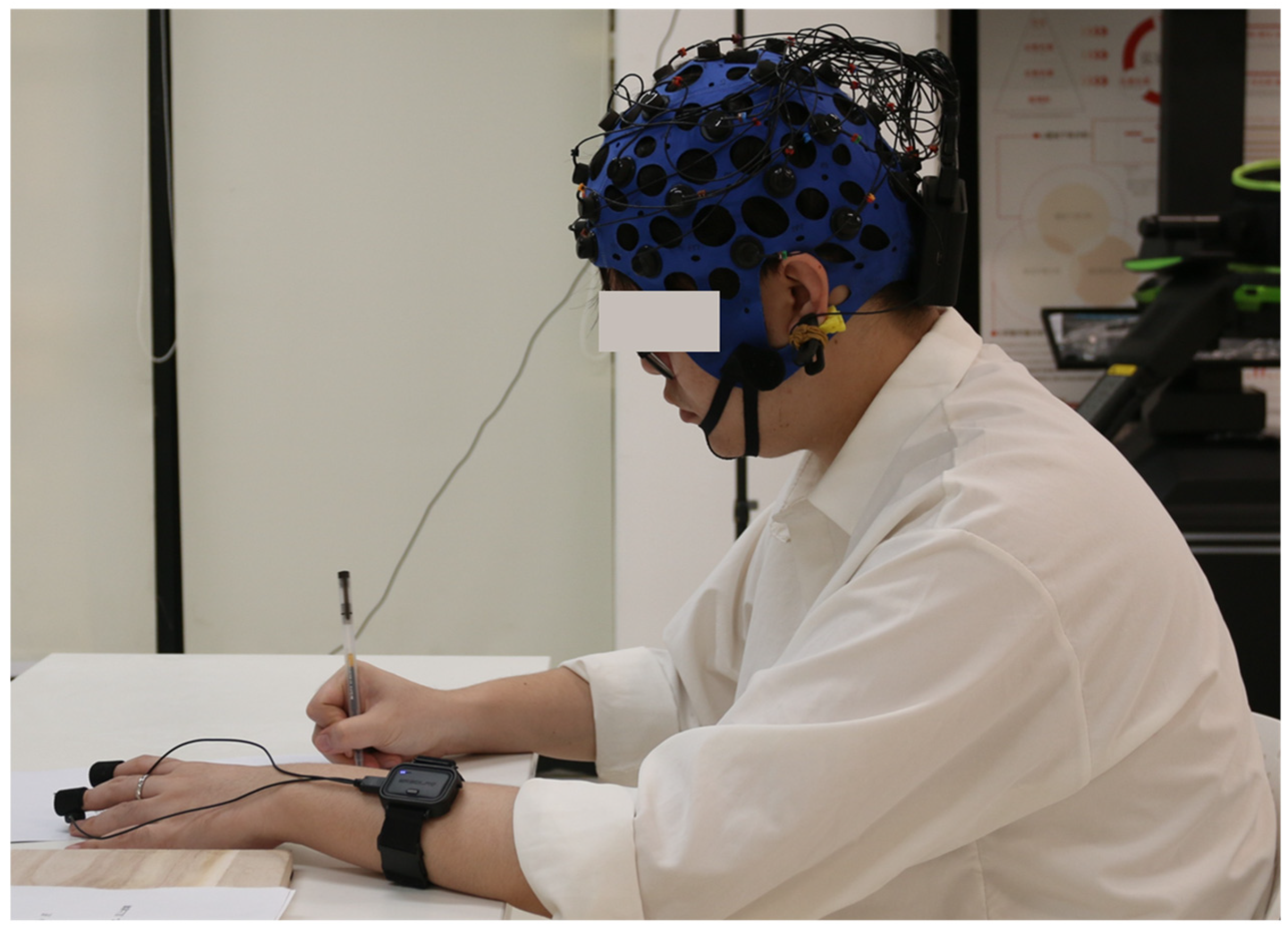
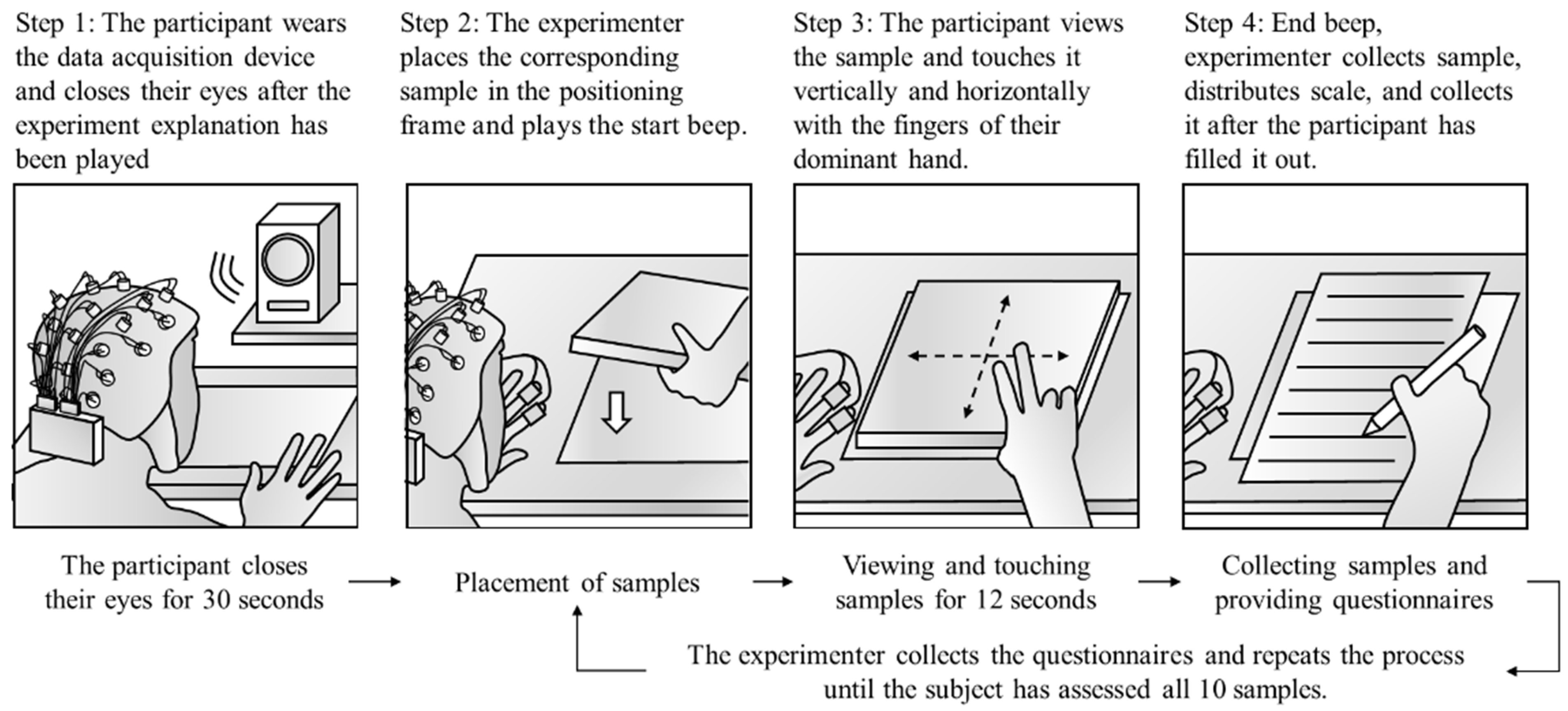


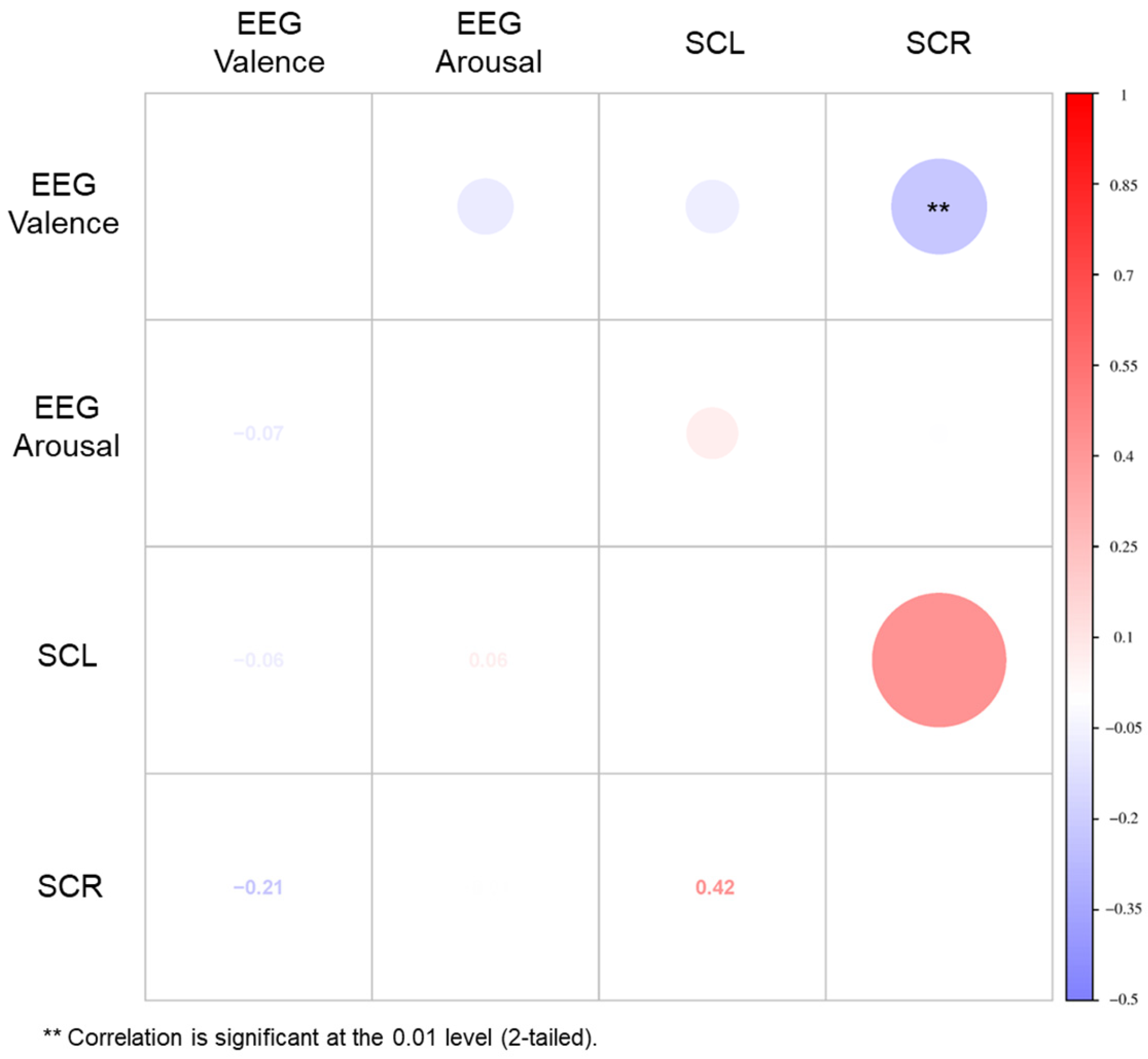
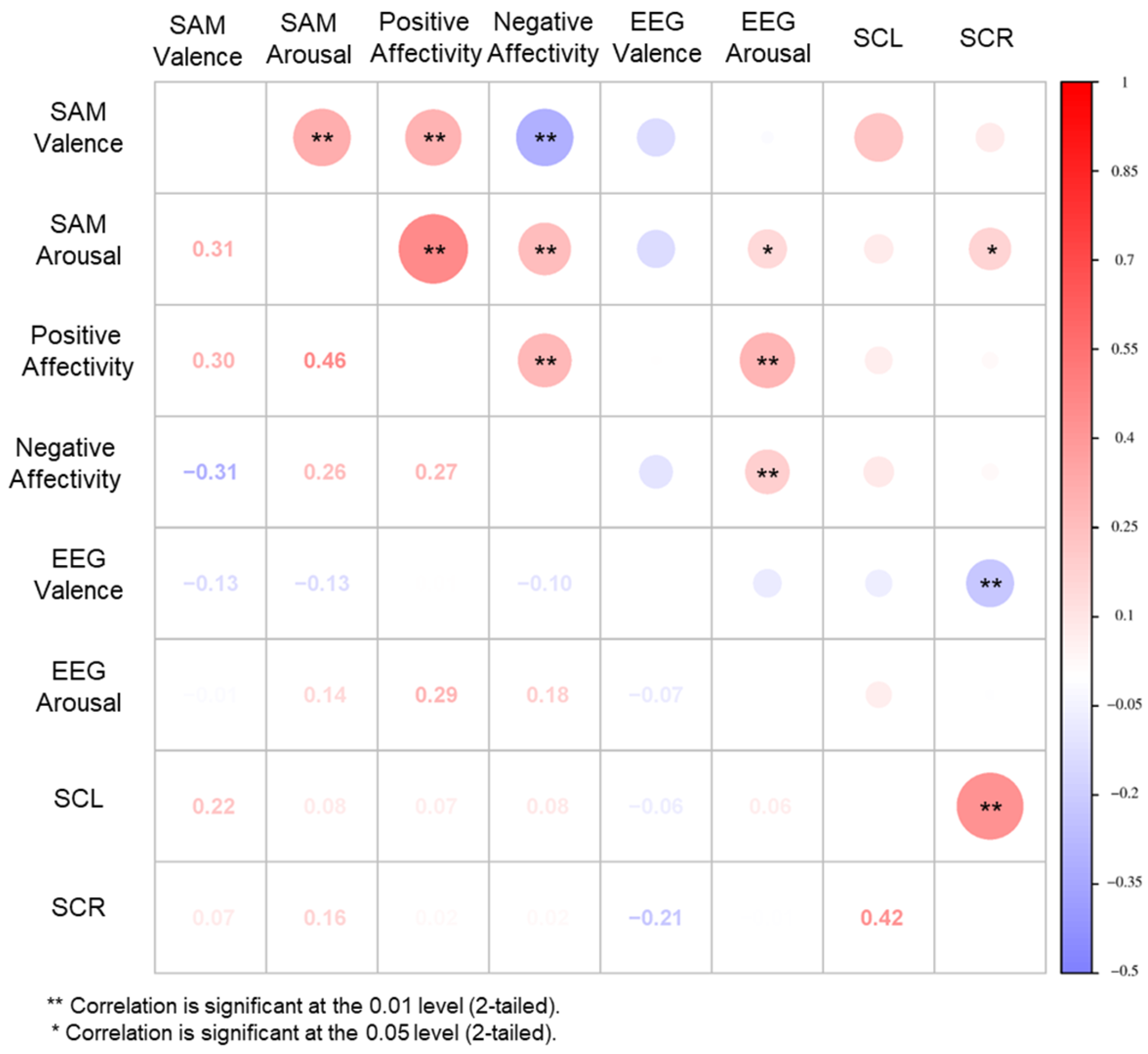




| Sample Name | Material Source | Tactile Sensation Category | Texture Category | Brightness Category | Sample Image |
|---|---|---|---|---|---|
| Ash | Nature | Smooth | Coarse texture | Bright | 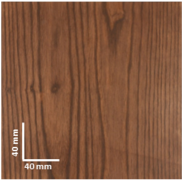 |
| Veneer A | Artificial | Grainy | Fine texture | Dull | 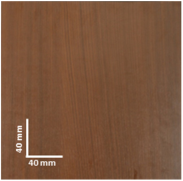 |
| Elm | Nature | Grainy | Coarse texture | Bright |  |
| Veneer B | Artificial | Rough | Coarse texture | Bright | 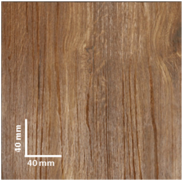 |
| Red oak | Nature | Rough | Mixed texture | Bright | 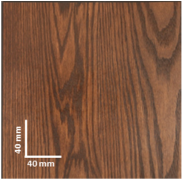 |
| Veneer C | Artificial | Grainy | Fine texture | Dull | 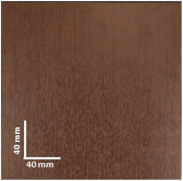 |
| Black walnut | Nature | Grainy | Mixed texture | Dull |  |
| White oak | Nature | Grainy | Coarse texture | Bright | 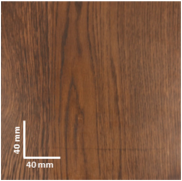 |
| Pine | Nature | Smooth | Coarse texture | Dull | 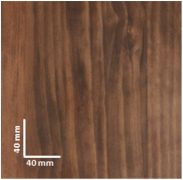 |
| Cherry | Nature | Smooth | Fine texture | Dull | 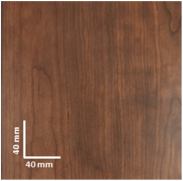 |
Disclaimer/Publisher’s Note: The statements, opinions and data contained in all publications are solely those of the individual author(s) and contributor(s) and not of MDPI and/or the editor(s). MDPI and/or the editor(s) disclaim responsibility for any injury to people or property resulting from any ideas, methods, instructions or products referred to in the content. |
© 2025 by the authors. Licensee MDPI, Basel, Switzerland. This article is an open access article distributed under the terms and conditions of the Creative Commons Attribution (CC BY) license (https://creativecommons.org/licenses/by/4.0/).
Share and Cite
Tan, S.; Gao, P.; Fan, Z.; Lin, N.; Long, Z. Emotion Drives Material Innovation—A Method for Investigating Emotional Reactions to Wood Materials. Buildings 2025, 15, 846. https://doi.org/10.3390/buildings15060846
Tan S, Gao P, Fan Z, Lin N, Long Z. Emotion Drives Material Innovation—A Method for Investigating Emotional Reactions to Wood Materials. Buildings. 2025; 15(6):846. https://doi.org/10.3390/buildings15060846
Chicago/Turabian StyleTan, Shenghua, Pin Gao, Ziqiang Fan, Nan Lin, and Zhiyu Long. 2025. "Emotion Drives Material Innovation—A Method for Investigating Emotional Reactions to Wood Materials" Buildings 15, no. 6: 846. https://doi.org/10.3390/buildings15060846
APA StyleTan, S., Gao, P., Fan, Z., Lin, N., & Long, Z. (2025). Emotion Drives Material Innovation—A Method for Investigating Emotional Reactions to Wood Materials. Buildings, 15(6), 846. https://doi.org/10.3390/buildings15060846








